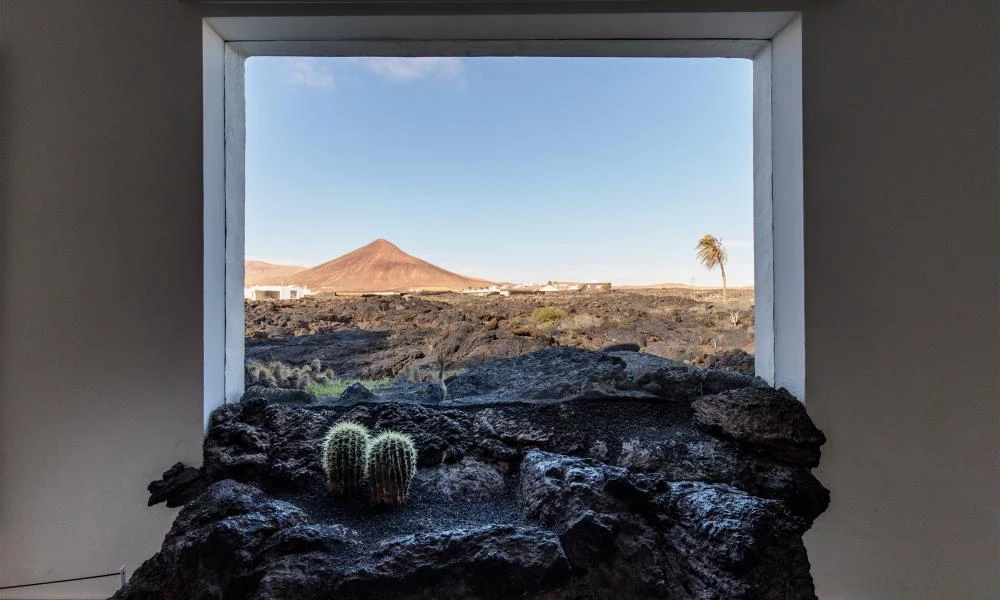
Fitting his architecture to its landscape, César Manrique turned Lanzarote into a living artwork of sun, sea and surprise.
A sea of gnarled black lava spills in through the window of a white cubic house on the island of Lanzarote, tumbling in contorted waves on to the polished concrete floor. A pair of chubby cacti cling to the rocky windowsill, as if swept indoors by the churning torrent of molten basalt outside. It looks as if the building might have been swamped by a volcanic eruption, but this is no natural disaster. It is the work of César Manrique, the celebrated artist-architect of Lanzarote. Harnessing lava formations as other designers use concrete and steel, he conjured spectacular spaces from the caves, bubbles and tunnels left by the primal movements of molten magma.
The house in question was his own home, now the César Manrique Foundation. This art gallery is just one of the unsung treasures of Lanzarote, an island which, along with the other Canaries, has a reputation as a package holiday destination. “Art into nature, nature into art,” was Manrique’s motto, and by the time he died in 1992, in a car accident near his home, he had left Lanzarote scattered with a series of startling projects that fuse landscape, art and architecture in a style all his own. Driven by a desire to preserve and enhance the drama of the island’s unique volcanic terrain, he campaigned tirelessly against the kind of high-rise resorts that had scarred the Spanish coast, arguing for a scale of development in tune with the Canary Islands’ rugged natural beauty. Ecologist, sculptor and geologist-architect extraordinaire, his work is being rediscovered by a new generation as the island sheds its “Lanzagrotty” image, exchanging Club 18-30 package deals for eco-yurts, boutique B&Bs and tourists with a nose for design... [+]


